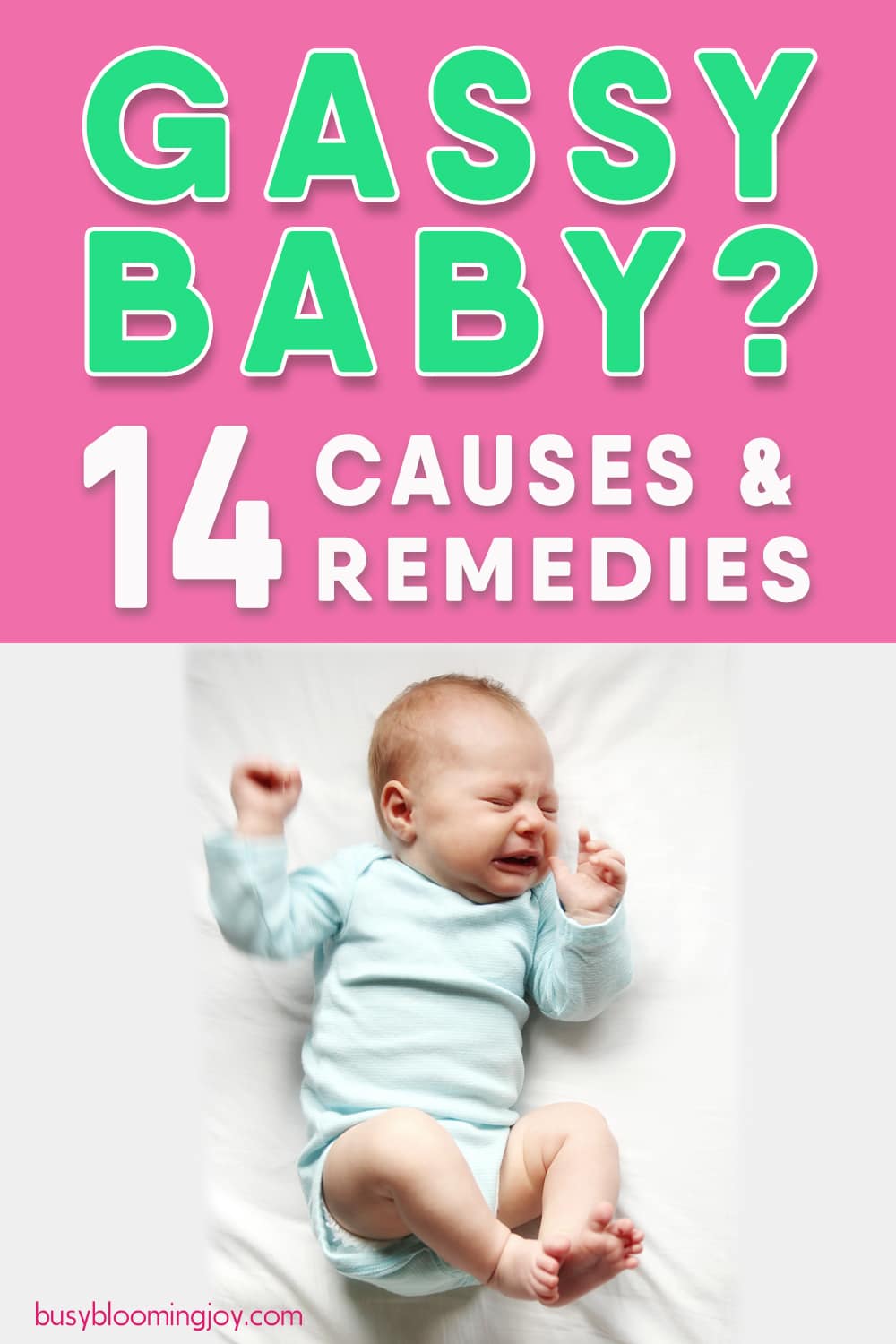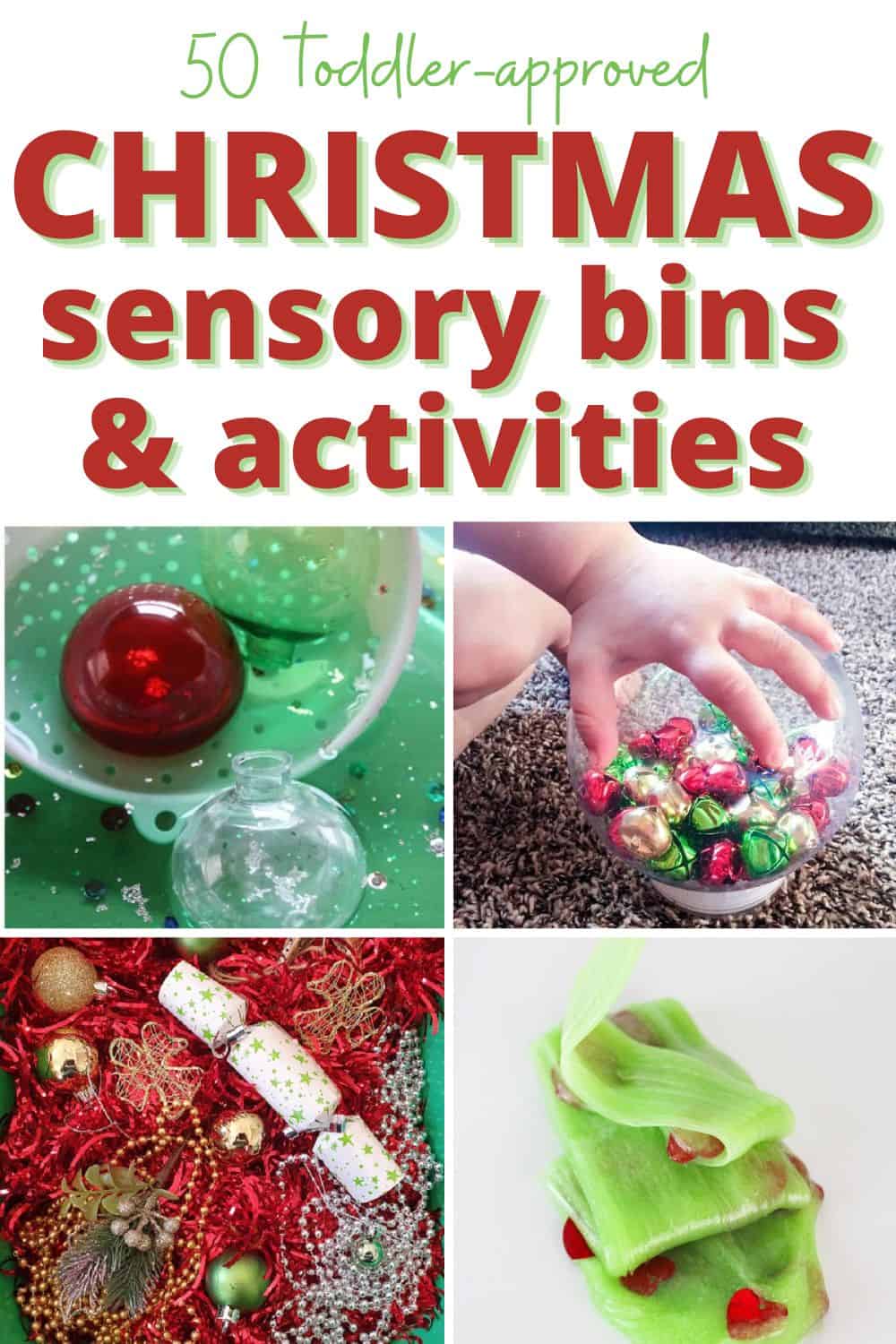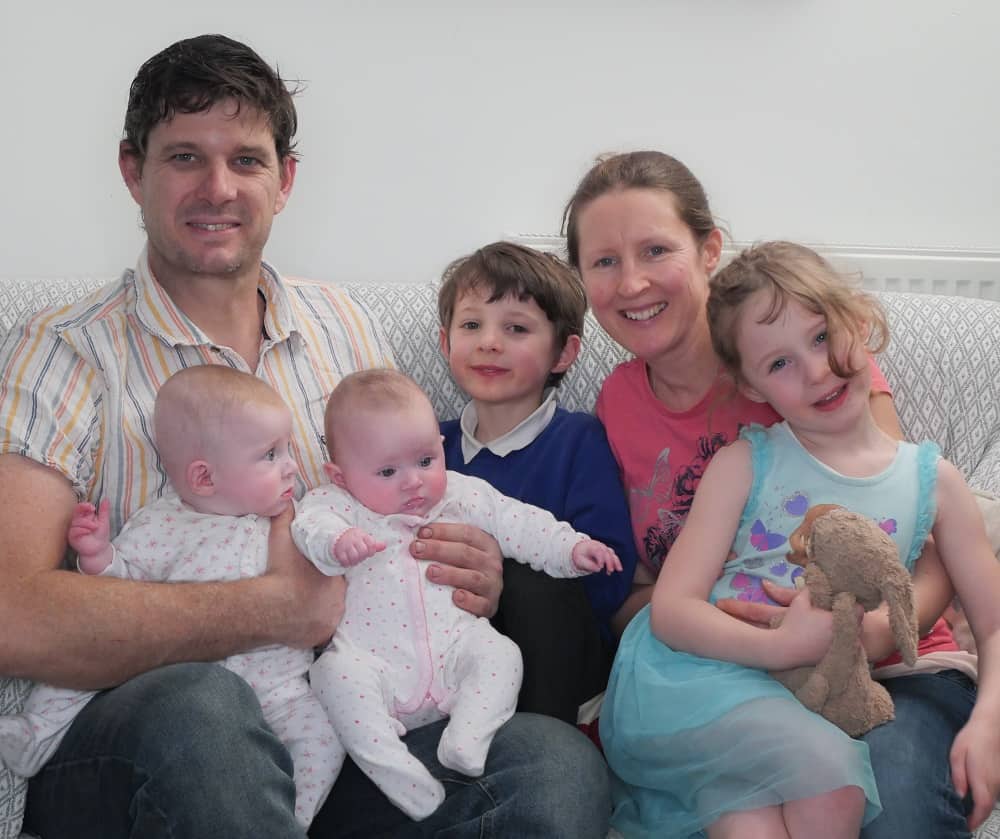Do you have a gassy baby? Chances are high!
Babies are naturally gassy. Their digestive systems are brand new and have a little bit of learning to do when it comes to passing stubborn trapped wind and gas. It ain’t easy when you’re so little.
Gassy babies don’t sleep well and aren’t happy little people.
Is your baby is crying A LOT? Is your baby screaming out in pain? Or just fussing a little? It could be gas.
Does baby seem uncomfortable and is worse after a feed? Chances are, it’s gas.
So having got the hang of feeding (piece of cake, right?! Excuse my sarcasm…) then comes the often arduous task of figuring why your baby is so gassy and what the heck to do about it.
(In case you’re not finding breastfeeding all that easy, I wasn’t, this post is for you: Your Essential Guide To Newborn Breastfeeding: A Must Read To Start It Right)
Helping your gassy baby pass that gas and minimizing gassiness in the first place is one of many important skills us parents need to master.
Here’s how.
(Next comes baby sleep – luckily I have a lot of help for you in that department too.. my most popular topic on the subject is this one: How to get your baby to sleep through the night: 10 steps for an awesome nights sleep, no cry-it-out)
This post contains affiliate links. If you click on one and make a purchase, I may receive a commission at no extra cost to you.
Table of Contents
ToggleBabies are naturally gassy
So your teeny, tiny newborn has never ingested, let alone digested, anything when born. The digestive system, and the nervous system that controls it are among the billion things that need to mature.
The muscles that help move food through the digestive tract take a good few months to develop the peristaltic rhythm necessary for efficient digestion.
For this reason, newborns often get trapped wind as they struggle to pass the gas that’s naturally produced during digestion. This build-up of gas creates pressure and pain until released (burp or fart).
Signs your baby has gas pains
Anything that overloads the digestive system, or increases gassiness, can bring about abdominal pain.
The signs are plentiful:
- clenched fists, flails arms and legs
- curls up and draws knees to chest
- tension or bloating in the abdomen
- grimaces, red faced
- crying, fussiness and general irritability
- high-pitched crying
If gas pains are to blame, once the gas has been passed baby should be visibly more content. However, if baby is still uncomfortable, fussing and crying, there may be something else going on.

Spitting up & reflux more likely in gassy babies
If baby is ‘spitting up’ or vomiting a lot of curdled (semi-digested) milk at most feeds, reflux might be an issue.
Reflux is when the stomach contents spill out and back up (reflux) into the esophagus (food pipe). Normally this semi-digested milk is regurgitated as ‘spit-up’.
A little bit of reflux is normal in babies as the valve at the top of the stomach is underdeveloped at birth and often opens when it shouldn’t.
But reflux can be painful. Stomach acid that aids digestion can sting and burn when it hits the esophagus.
Reflux symptoms
In addition to gas pains, symptoms of reflux include:
- excessive spit up – a lot of milk at most feeds
- arching back and throwing head back
- a high-pitched piercing cry
- sour breath and burps
Silent Reflux
This is when all of the above happens, but without the spit up. This can be even more painful. Stomach contents burn on the way up and the way down…
Cause of reflux
Excess gas in itself might be the cause of reflux. The trapped wind puts extra pressure on the valve designed to keep stomach contents in the stomach. When this gas is released, the valve opens too much, allowing semi-digested milk out.
So a gassy baby is more likely to spit up and suffer reflux.
Minimizing gassiness could stop the reflux.
So before heading out in search of reflux remedies and medications, read on!
Gassy baby causes & remedies: baby swallowing extra gas
#1 Poor latch can result in a gassy baby
Signs of a poor latch include:
- Clicking or smacking noises
- Painful nipples – baby latching right at the end of the nipple
- Limited swallowing sounds as baby is not sucking efficiently
- Tongue not visible when you pull the bottom lip down
As a result, baby takes in much more air than necessary. Gassy baby alert.
HOW TO HELP YOUR GASSY BABY
IN A NUTSHELL
Ensure a good latch, seek help from a location consultant if necessary.
HOW TO DO IT
If your baby has a good latch you should notice the following:
- Your baby has a good chunk of nipple in his or her mouth (not just the tip of the nipple)
- You can hear swallowing (i.e. baby is getting milk)
- You can see your baby’s tongue when you pull the bottom lip down.
Hopefully, someone at the hospital will have helped you get the basics. If not this video has a great demo on how to achieve a good latch.
Still struggling?
There’s a whole profession dedicated to helping mama’s breastfeed because many, many moms find it tricky.
Go seek out your nearest lactation consultant.
#2 Tongue-tie can increase gassiness
A tongue-tie is when baby’s tongue appears to be ‘tied’ to the bottom of the mouth.
This happens when the tissue that joins the underneath of the tongue to the floor of the mouth, the lingual frenum, is too short. The tongue cannot move as much as it should.
It’s not uncommon, affecting around 10% of babies.
With this reduced mobility comes a difficulty in feeding and more often than not, a gassy baby!
A baby with a tongue-tie may:
- Struggle to latch well
- Only latch right at the end of the nipple – causing pain
- Struggle to stay latched
- Makes a lot of clicking noises while feeding (sucking in air frequently)
- Dribbles a lot during a feed
- Gasps for air during a feed
All of these can result in a gassy baby.
Severe cases of tongue-tie may mean your baby is not getting enough milk, so is unsatisfied after a feed, and show slow weight gain.
HOW TO HELP YOUR GASSY BABY
IN A NUTSHELL
Get it checked out asap by someone in the know and snipped if necessary.
(Just to clarify, by ‘someone in the know’, I don’t mean your mom or your most expert mom friend, I mean a medical professional.)
HOW TO DO IT
If baby has a tongue-tie you may want to consider having it snipped (tongue-tie division).
This is a simple procedure, involving anesthetic for very small babies and a minor amount of blood loss.
In the UK it’s often performed soon after birth before baby even goes home. Check this article from the NHS for more details.
But in other parts of the world, a ‘wait and see’ approach is preferred. You may choose to check whether a lactation consultant can help with positioning and latch – some babies are able to breastfeed successfully with a tongue-tie.
This article from Mayo Clinic has more on the subject.
#3 Crying itself means baby more likely to swallow gas
If baby is screaming at the top of her lungs, chances are she’s gulping in air at some point.
HOW TO HELP YOUR GASSY BABY
Hopefully, the solutions in this article will help with excessive crying… Keep reading.
#4 Frantic feeding can lead to a gassy baby
If baby gets over-hungry – fussing and crying – chances are he or she will suck, drink and gulp milk down frantically. As a result, baby may swallow excess milk in the process… making gas pains more likely.
HOW TO HELP YOUR GASSY BABY
IN A NUTSHELL
Don’t let baby get over-hungry
HOW TO DO IT
Respond to babies feeding cues. These include rooting, opening the mouth, stirring and stretching, sucking fingers as per demonstrated in this video.
Crying is a late hunger cue – you want to feed baby before the cries erupt!
Also remember that rooting is also a sign that baby wants comfort – it’s not just a hunger cue. If baby only fed recently you could try to offer a pacifier first or another means of comforting – you want to avoid digestive overload, as per #7.
Factors that can cause a BREASTFED baby to swallow extra gas
#5 Fast milk let-down often an issue in gassy babies
Milk ‘let-down’ is stimulated by baby sucking – the milk-ejection reflex. It can occur a few times during a feed.
Does your baby do any of the following?
- Couch, gulp, gasp at the beginning of the feed as well as at other points in the feed
- Come off the breast at regular intervals during the feed
- Bring up a lot of milk (spit up) during and after a feed
- Sometimes refuse to feed
- Is generally uncomfortable when feeding
If so, this could be due to a fast let-down.
If your breasts are very full and/or you have a large supply, you’re more likely to have a fast let-down.
It’s the coughing, gulping and gasping that may be making your baby very gassy, causing gas pains.
HOW TO HELP YOUR GASSY BABY
IN A NUTSHELL
Initiate let-down yourself. Feed in positions where baby has to suck milk uphill.
HOW TO DO IT
These two tactics worked the best for me:
1 – Express some milk by hand at the beginning so milk has already let-down before your baby starts to feed
2 – Feed in a position where your baby has to suck milk uphill (in most positions gravity aids milk flow which makes a fast let-down even worse)
Try sitting in a recliner chair or lying down with your baby on top, tummy to tummy.
In addition, as per #5 above, don’t let your newborn get too hungry before a feed – frantic sucking at first latch will only exacerbate a fast let-down
Factors that can cause a FORMULA-FED baby to swallow extra gas
#6 Bubbles in formula
Mixing formula by shaking it can make it bubbly, making baby extra gassy.
HOW TO HELP YOUR GASSY BABY
Allow formula to stand for at least a few minutes to allow gas to escape before feeding baby.
#7 Bottle teat not always filled with milk
As a result, baby sucks in air.
HOW TO HELP YOUR GASSY BABY
Hold the bottle at a steep enough angle to ensure the teat is always filled with milk.
#8 Certain bottle brands/designs
Certain bottles may suit some babies better than others. In addition, there are bottles specifically designed to minimize gas intake – ‘air-vented’.
HOW TO HELP YOUR GASSY BABY
Experiment with different bottles.
These Dr Brown’s bottles seem to be the go-to for anti-colic and I quickly became a convert. They were a huge improvement over all the Tommee Tippee bottles I tried, even their anti-colic ones. The Dr Brown’s ones seem to have a more effective air-venting system and also have lovely soft, supple teats (the Tommee Tippee teats are much harder).
Also, from a practical point of view, the air-vent system is much easier to wash in the Dr Brown’s version. Plus, if you buy the ‘Options’ version, you can remove the air-vent system when baby grows out of the whole gassiness thing (yes, it does happen!) which means a lot less fiddling about with sterilizing etc.
#9 Using a teat with the wrong flow
As babies grow, both developing a stronger suck and ability to drink milk more quickly, you need to change the bottle teat.
So baby starts on a ‘slow’ teat (small hole, slow flow) to successively ‘faster’ ones (large hole, fast flow).
If baby is feeding with a teat that’s too slow they may suck so strongly they also suck in more air than normal.
If the teat is too fast, baby may struggle to drink the milk quick enough and gulp down air in the process.
HOW TO HELP YOUR GASSY BABY
IN A NUTSHELL
Try to ensure baby is using the appropriate teat, experiment if necessary.
HOW TO DO IT
Watch for signs baby is ready to move to a faster teat or signs they need to go back to a slower one:
- TEAT TOO SLOW – baby getting frustrated during a feed, wanting to drink quicker
- TEAT TOO FAST – baby coughing and choking on milk, milk overflowing from baby’s mouth
The first is a bit harder to spot. But If you think baby is ready, try a faster teat. Baby should adjust very quickly – after a few sucks.
If the faster teat is too fast and baby has not adjusted after a few sucks, the signs will be pretty obvious. Just switch back to the slower one.
Gassy baby causes & remedies: gas not released sufficiently
#10 Not burping enough
Ok, just like anything baby, there’s no hard and fast rule for exactly how many burps a gassy baby needs. But it’s probably a lot more than you think! A heck of a lot more.
HOW TO HELP YOUR GASSY BABY
IN A NUTSHELL
Burp baby. A lot. During a feed, after a feed. Burp effectively (rub, don’t pat)
BURPING YOUR GASSY BABY A LOT – HOW TO DO IT
Philippa Murphy is a postnatal educator, author, mom and founder of BabyCues. She spent 6 years caring for newborn babies, living in with families for months at a time and also studied the digestive biology of infants at length.
Philippa has the following guidelines for the number of burps following a feed:
- 0 to 2 weeks: minimum of 10 burps
- 2 to 6 weeks: minimum of 10 burps but aim for 20
- 6 to 12 weeks: minimum of 15 burps but aim for 25
This is obviously just a guideline. 1 large burp may be equivalent to 3 small ones. Plus, this number will vary depending on just how gassy your baby is.
But it’s a lot more than 1 or 2. That’s never going to be enough.
Burp baby during a feed a few times and after a feed. Keep going until you reach double figures.
This is key to soothing your baby’s gas pains!
#11 Not burping effectively
HOW TO HELP YOUR GASSY BABY
IN A NUTSHELL
Use movements that put gentle pressure on the abdomen. Rub, don’t pat! Look for wind cues
BURPING YOUR GASSY BABY EFFECTIVELY – HOW TO DO IT
This video here has a good example:
Another popular move for relieving gas is the ‘baby bicycle’. With baby lying on her back, lift her legs up and move them in a pedaling motion.
Alternatively, flip baby onto her front. Tummy time puts gentle pressure on the abdomen, helping expel gas.
There’s also baby massage for gas and probably a billion other ways to try and get rid of stubborn trapped wind and ease gas pains.
You may even find your own method that works wonders with your baby.
Some tips when it comes to burping:
- Avoid patting the back of your gassy baby. This may have the adverse effect – breaking down large air bubbles into smaller ones which are harder to pass. Rather rub baby’s back firmly in a circular movement.
- DO try and burp your gassy baby before putting them to sleep. It’s highly likely that any trapped wind will disturb baby, causing them to wake up in between sleep cycles
Look for ‘wind cues’
There are a number of cues that your baby is gassy. These ‘wind cues’ are evident well before baby gets uncomfortable to a point of fussiness and crying.
Does your baby appear to be smiling? Chances are, if baby is smiling and younger than 10 weeks old, wind (trapped in the upper stomach and throat) is the main cause. (Sorry to burst that bubble…)
If that wind is NOT released before more accumulates, gas pains, discomfort, fussiness and crying are all likely. You will have a very gassy baby on your hands.
Another wind cue is a chewing motion, with the tongue sticking out. This can easily be mistaken as a hunger cue. If you feed baby, rather than help release that wind, the feeding is likely to add to your baby’s gassiness…more gas pain is on the cards…
You can read more about the 6 wind cues here.

Phillipa has also written in-depth about these wind cues and how to burp your baby, using ‘Nature’s Wind Sequence’ in her book, Baby Cues – Nurture with Nature (not an affiliate link).
I have not read it but I seriously wish I had when I was in the middle of the newborn phase. (If I’m ever expecting a 3rd baby, this will be my first purchase, without a doubt!)
#12 Baby feeding in a lying down position
If baby is lying down while feeding, it’s a little more difficult for air to escape. Drinking in a more upright position makes it easier for gas to escape, simple as that.
In addition, if baby is still holding onto any gas after burping, keep them upright for a while after a feed will help this gas to pass.
(Though after 10-20 burps as per #1 there shouldn’t be any of course!)
HOW TO HELP YOUR GASSY BABY
IN A NUTSHELL
Ensure baby’s mouth and throat are higher than their stomach when feeding. In addition, keep baby a little upright after a feed.
HOW TO DO IT
Find a comfortable position to breastfeed in where baby is in a semi-upright position.

To keep baby a little bit upright after a feed, I absolutely loved this baby bouncer from Tiny Love: it’s really supportive (can be used from birth unlike some of the other baby chairs/bouncers) and has a vibrate function which helped soothe my gassy daughter. (It’s also got hanging toys and fairly inoffensive music… it really is the Rolls Royce of baby bouncers!)
When baby is older and able to support their head and neck but still can’t sit unaided, an infant seat is the way to go.
Look for one with a lot of support so baby doesn’t slouch and, ideally, a play table, like this Bumbo. Both my babies loved the Bumbo (it’s also light and very portable, unlike a lot of baby clobber, and perfect for when it comes to starting solids and baby is too small for a big highchair.)
Gassy baby causes & remedies: baby produces extra gas due to behavioral factors
#13 Overfeeding: over-loads baby’s digestive system
Babies fed too often and too much may suffer excess gassiness, abdominal pain and discomfort because their digestive system is overloaded, quite literally.
The stomach of a newborn is small – it can only hold so much.
Plus, it takes several hours for milk to move from the stomach into the gut. This slow transit is necessary to allow the stomach enzymes to break down the high concentration of fats in milk.
Feeding baby too frequently, before the stomach has emptied, forces semi-digested milk into the gut too early. Undigested fats and lactose (the main milk sugar) ferment in the gut causing…. More gas.
This ‘digestive overload’ can lead to a vicious cycle where baby then looks to suck and feed more for comfort. Putting more pressure on the digestive system…
HOW TO HELP YOUR GASSY BABY
IN A NUTSHELL
Avoid over-feeding and prolonged ‘comfort’ feeding.
HOW TO DO IT
Following a feed and sleeping schedule, where you gradually space feeds out leaving plenty of time for milk to digest, should avoid feeding baby too frequently.
In addition, be careful not to comfort feed excessively.
Rooting to suck is not only about hunger but also about comfort. Comfort feeding is normal and natural, but in excess will only make a gassy baby even more gassy causing more gas pains.
A pacifier can help with digestive overload, allowing baby to suck and help them calm down, without drinking even more milk.

#14 Oversupply: leading to fore/hindmilk imbalance & increased gassiness
If you’re breastfeeding and have a lot of milk your baby might not be getting the right balance of fore- and hindmilk.
The milk at the start of the feed (foremilk) is high in lactose (milk sugar) and low in fats. As the breast empties, the lactose content decreases and fat content increases. So the milk towards the end of the feed (the hindmilk) is low in lactose and high in fat.
If you’re producing lots of milk, your baby may not reach the hindmilk. Or, you may end up switching to the other breast before completely emptying the first.
As a result, baby ingests too much lactose and not enough fats. So:
- Less fat in the diet means baby is likely to be less satisfied after a feed – fat digestion is slower, keeping baby fuller for longer
- Too much lactose means some will be left undigested and instead ferments in the gut….this fermentation means more gas and therefore more gas pains for your baby
Watery stools that are often green are also a sign of fore/hindmilk imbalance in gassy babies.
For more details on foremilk, hindmilk and other essential breastfeeding information this post should help: Your Essential Guide To Newborn Breastfeeding: A Must Read To Start It Right
HOW TO HELP YOUR GASSY BABY
IN A NUTSHELL
Ensure breast is empty before switching to the other side.
HOW TO DO IT
When breasts are completely empty they should feel very soft and you will be unable to squeeze any more milk out by hand.
Don’t worry if baby is satisfied by drinking from one breast only. Rather express a bit by hand to relieve any discomfort.
In fact, not feeding from the second side will help reduce milk production on that side, aiding the overall problem of oversupply.
For more on what to do if feel like you oversupply is an issue, this article from Mother And Child Health is a great read.
Gassy baby causes & remedies: baby produces extra gas due to underlying gut issues
#15 Imbalance of gut bacteria
There has now been a ton of research on gut bacteria in babies. Gassy babies that cry a lot appear to have an imbalance of gut bacteria; too many bad bacteria and too few ‘good’ bacteria, or probiotics.
Meaning more gas pains for your baby.
There’s now evidence, such as this, that the gut health of babies is influenced by their mom before birth. So ensuring you have a healthy gut during pregnancy will help your baby develop a healthy balance of gut bacteria.
Natural birth and breastfeeding, even for a few weeks, can also aid baby’s gut flora and give your baby a better chance in the gassiness stakes.
Chances are, you’re reading this because you’re trying to figure out how to help your gassy baby right now – in which case, talk of optimizing your gut health and choosing a natural birth are a bit in vain!
Don’t fret – there are options…
HOW TO HELP YOUR GASSY BABY
IN A NUTSHELL
Supplement with probiotics.
HOW TO DO IT
For several years the jury was out on the effectiveness of the probiotic Lactobacillus reuteri. But in 2018, The American Academy of Pediatrics concluded that probiotics are effective in reducing the crying times in gassy babies.
Look for probiotics which contain L. reuteri DSM 17938, such as BioGaia Probiotic Drops.
Probiotic fortified formula
On this one, the jury is still out.
A formula that has added probiotics, may or may not help. The evidence is conflicting and different formulas contain different types and different concentrations of probiotics.
They can also come with a hefty price tag.
Possibly worth a try, possibly not.
As such I’m not including any links – my google search for an ‘infant probiotic’ was rather fruitless. Enfamil Enspire Gentlease, specifically for ‘easing gas’, doesn’t list any probiotic ingredients.
#16 Food sensitivities
Yes, there are foods that cause gas in breastfed babies, as well as babies fed formula.
Cow’s milk protein allergy – or CMPA.
This is normally only an issue for formula-fed babies, where it accounts for the colicky behavior (excessive crying and gas pains) of around 1 in 10 babies fed cow’s milk-based formula.
A baby who has CMPA has an immune response to the milk proteins, producing antibodies, which causes abdominal discomfort, pain and colicky crying.
The symptoms are similar to those any gassy baby will show – AKA lots of gas pains and discomfort.
In addition, a skin and/or respiratory reaction is likely (rash, coughing, wheezing) as is a bit of blood in the poop.
Very allergic babies who are breastfed may also suffer if mom eats a lot of dairy products.
Sensitivities to other foods
Just like cow’s milk protein, other foods can stimulate an immune response.
Such a response is more likely when weaning onto solid foods, but just like dairy and cow’s milk proteins, a breastfeeding mother can also pass on potential allergens in breastmilk.
Transient Lactose Intolerance
This is different to cow’s milk protein allergy!
It’s a deficiency in lactase, rather than an allergy. At birth, babies are deficient in this enzyme that breaks down lactose, the complex sugar found in milk.
Without enough lactase, lactose ferments in the gut producing a lot of extra…. Yup, gas!
In time. baby will naturally increase their supply of lactase and the situation resolves itself.
HOW TO HELP YOUR GASSY BABY
IN A NUTSHELL – COW’S MILK PROTEIN ALLERGY OR OTHER FOOD ALLERGIES
Remove cow’s milk protein or other potential allergens from baby’s diet.
IN A NUTSHELL – LACTASE DEFICIENCY
Source some infant-formulated Lactase drops.
HOW TO DO IT
If you believe any of the above to be an issue and are wondering…
- which formulas to use if you suspect baby is allergic to cow’s milk protein
- which other foods baby may be sensitive to and how to figure it all out
…check out this post: My baby is gassy. Is it a sensitivity to dairy or something else?
What about over-the-counter remedies for gassy babies?
I’ve mentioned baby probiotics at #2.
But what about gas drops and Gripe Water?
Newborn gas drops (simethicone)
For example, Gerber Gas Relief Drops, Mylicon, Phazyme and Infacol.
The active ingredient in all these is simethicone.
Simethicone is meant to break down large gas bubbles into smaller ones, making them easier to pass.
Sounds great in theory, but so far there’s no scientific evidence to suggest it eases gas and/or reducing crying times (source).
But some moms swear by it. There’s no harm in giving it a try!
My son certainly loved the taste of Infacol. I don’t think it helped him with gas but he wasn’t particularly gassy. My daughter, on the other hand, was an extremely gassy baby. Infacol had no effect.
I’m including the link to Mylicon, which my mom blogger friends assure me is the go-to for gas drops in the US. Infacol is from the UK so the extra cost is due to shipping.
Gripe Water
Gripe water is a herbal remedy with ingredients such as dill, fennel, ginger, chamomile and lemon balm meant to help with digestion in gassy babies.
The are a whole heap on the market, nearly all unregulated by the FDA.
So if you’re wondering, if gripe water is safe, it depends on which one you buy.
Ingredients to avoid in gripe water products:
Alcohol – aggravates discomfort and intoxicates baby, hence alcohol-free versions are now only available in the UK and US.
(I tried Woodwards Gripe Water with my daughter, pleased with the fact that here in Africa you can still buy the one with alcohol…. But alcohol for baby? A big no-no.)
Sodium Bicarbonate (Baking Soda) – this works to neutralize stomach acid but can also be absorbed into the bloodstream and cause unwanted side effects.
Sugar – not good when baby teething or already has teeth
Any potential allergens – soy, wheat, dairy or gluten
As such, there’s only one product that seems to avoid all of the above and is regulated by the FDA: Colic Calm.
Gets some rave reviews on Amazon – something I wish I’d tried!
Baby massage for gas
Baby massage can both soothe your gassy baby and help move any trapped wind from lower parts of the abdomen to higher parts. It may even bring up a burp.
It’s not for when baby is crying, baby needs to be calm and relaxed enough to do the massage.
This video has a great demonstration of 6 different massage techniques: ‘around the clock’, ‘baby bicycles’, ‘scooping the sand’, ‘I love you’, ‘the sun and the moon’ and ‘the colic carry’ or ‘tiger in the tree’.
Baby still upset after wind passed?
There are several other possibilities.
Constipation
Symptoms of constipation are similar to gas pains. Baby wriggling, flailing arms, legs etc in discomfort. Biggest difference though is baby’s poop. Hard ‘goat-like’ pellets are a sign of constipation.
Check this article from Medical News Today for easy remedies for constipation.
Acid Reflux or GER
If none of the above have helped your gassy baby, acid reflux could be an issue. A post on this is coming soon.
The Witching Hour
If baby is crying and fussy and it only seems to happen in the late afternoon/early evening, this could be The Witching Hour. This a combination of over-tiredness, over-stimulation and over-feeding, as per #4.
A witching hour post is also coming soon.
Colic
While gas itself is often a factor in colic, it’s not thought to be the underlying reason for excessive crying in colicky babies.
There’s evidence to suggest that colic babies are more sensitive to the world around them and less able to calm down once distressed.
So gas pains are more likely to upset them, but even once wind has been passed, baby may still be unsettled. Avoiding over-tiredness, over-stimulation are key.
To read more about colic, check out this post: Is ‘colic’ crying really inconsolable? What is colic, what causes it & colic remedies (yes, there ARE some)
Other medical issues
If concerned by your babies fussiness or crying is consolable, a check-up with your pediatrician be able to identify any other medical causes.
In summary
Hopefully, that has armed you with info to help your gassy baby!
To recap – check for any issues that may be causing baby to swallow extra gas.
Burp, burp, burp. Then burp some more. Count them. Make sure you reach double figures at least, for every feed.
Try a probiotic – finally, there’s scientific evidence that probiotics can help gassy babies.
If you suspect a sensitivity to dairy, try Lactase and remove cow’s milk protein from your baby’s diet.
More on this here: My baby is gassy. Is it a sensitivity to dairy or something else?
Don’t think it’s gas after all?
There may be other reasons baby is fussy and colicky, other than gas pains. Read all about colic here: Is ‘colic’ crying really inconsolable? What is colic, what causes it & colic remedies (yes, there ARE some)
Are there any weird and wonderful burping techniques you’ve come across that you’d like to share? Please let me know in the comments below!













